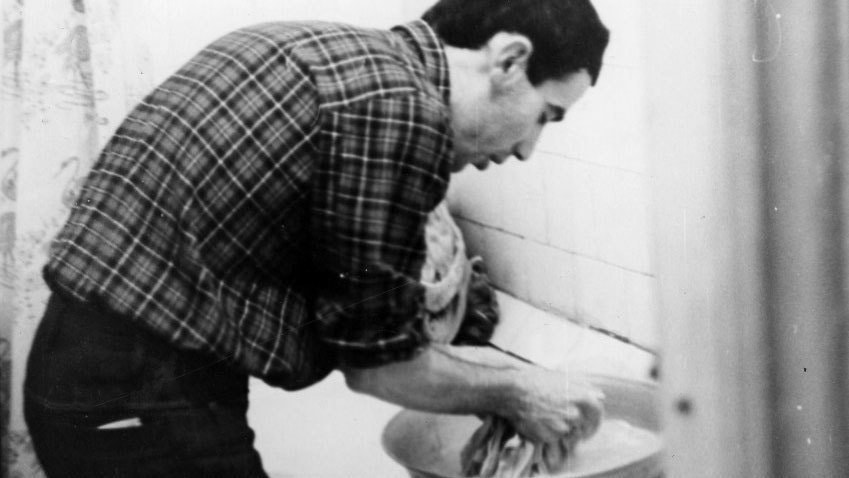Sekretiki No. 9. Yuri Albert's Helping with the Housework

Some types of sekretiki are hidden in plain sight. At first glance it seems that there are none of the distinctive characteristics pertaining to art in Yuri Albert’s helping people with household chores. The age of pragmatism has created a demand for art that is closer to the people by being accessible, socially engaged, and preferably for free. Albert’s conceptual work meets these expectations. It provides a technology of self that enables the transformation of the realm of everyday life into an artwork.
This approach is similar to one of the four spiritual paths in Hinduism, the yoga of action. Right work done well as a form of prayer is not a foreign concept to the Moscow conceptualists, and is best expressed in this poem by Dmitri Prigov:
I struggle with domestic entropy
As the source of divine energy
I conquer imperceptible blind forces
In an untriumphant struggle
I wash dishes three times a day
I wash and polish the floor all over
I erect the meaning and structure of the world
On a spot that would seem to be empty
Another sekretik concealed in Albert’s work is the invisible woman. How would the meaning of the artwork change if the author of Helping with the Housework was female? This is the right moment to ask who usually did the cleaning after apartment-based art events. Who made sandwiches for the participants of Collective Actions’ Trips Out of Town? “In our work we are focused on the realm of the psychological, and therefore we have to pay particular attention to that which occurs at the edges of the action’s demonstrational field,” acknowledges Andrey Monastyrsky, one of the leaders of the Moscow conceptualist movement. The mother of action artist Sven Gundlakh was not impressed by Helping with the Housework. After Albert’s cleaning services her apartment, the “action’s demonstrational field,” looked much dirtier than before.
